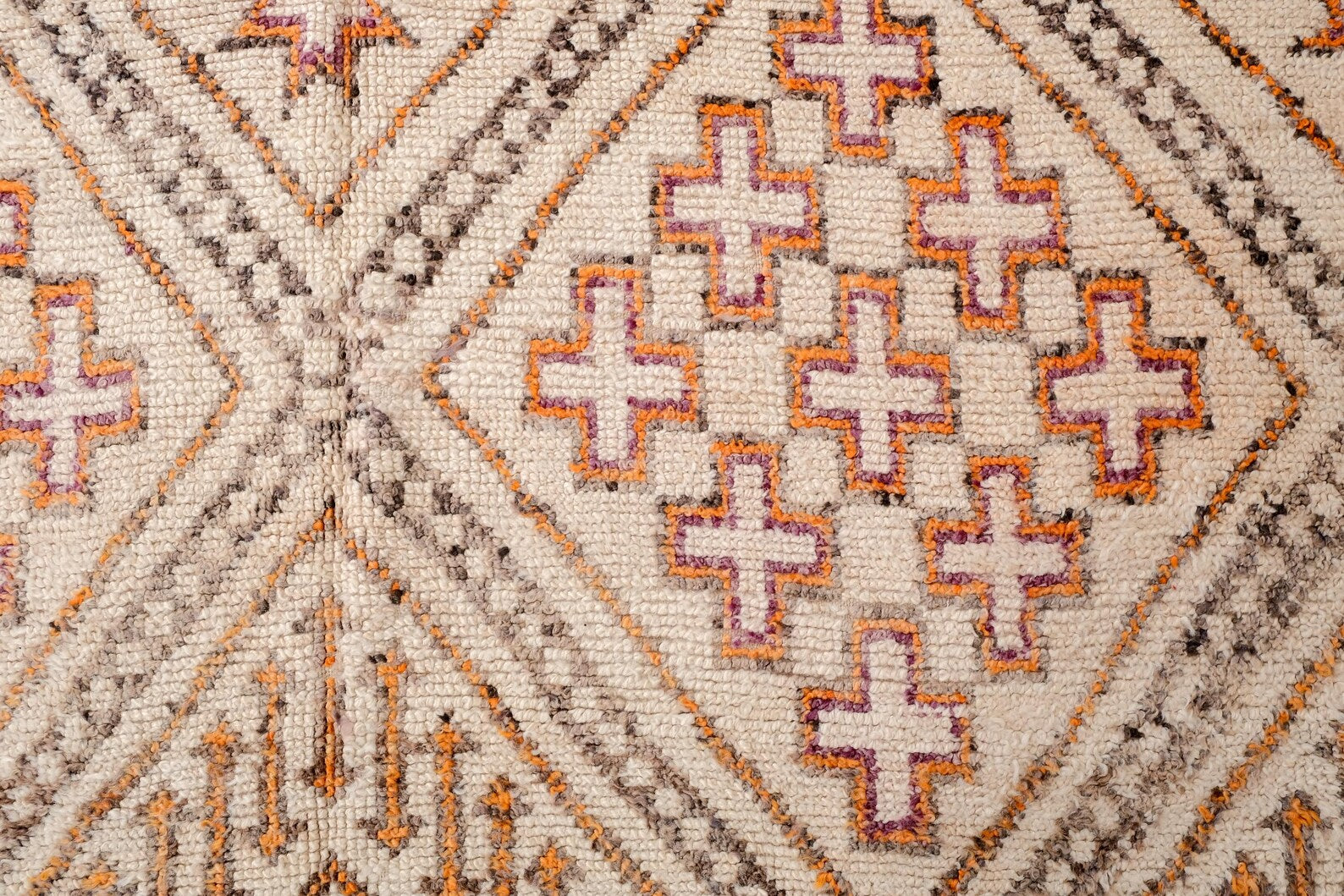Explore the sacred tradition of pattern knowledge passed from grandmother to daughter, to granddaughter in Berber communities.
In the Atlas Mountains of Morocco, knowledge flows like water through ancient channels - from grandmother to mother to daughter. This is the story of how rug patterns become living libraries, preserving centuries of cultural wisdom in wool and dye.
The Sacred Transmission
In Berber communities, rug-making knowledge passes directly from grandmother to granddaughter through hands-on learning at the loom. No written patterns exist - instead, each design lives in memory and is shared through careful observation and practice.
Grandmothers teach by demonstrating motifs while explaining their meanings: "This diamond shape is the eye of the partridge, woven for protection during travel. These zigzag lines represent water, calling rain to nourish our valleys." Through this intimate teaching, cultural knowledge and technical skill transfer together, ensuring both craft and meaning survive.
Symbols That Speak
Every motif in a Berber rug carries meaning passed down through matrilineal lines:
The Baraka Hand - Five-fingered symbols ward off evil and invite blessing
Diamond Eyes - Protection during journeys, whether physical or spiritual
Fertility Symbols - Curves and crescents that bless homes with abundance
Water Patterns - Zigzag lines that call forth life-giving rain
Mountain Peaks - Triangular forms honouring the Atlas range that shelters these communities
Living Tradition, Living Change
While foundational patterns remain consistent, each weaver brings her own perspective to the craft. Traditional motifs evolve as weavers incorporate personal experiences and contemporary influences into their work. A diamond pattern might become slightly larger after a particularly prosperous year, or color choices might reflect current family circumstances.
Grandmothers encourage this creative interpretation within traditional boundaries. They teach the essential techniques and meanings, then allow their students to develop their own weaving voice while maintaining the cultural integrity of the craft.
The Modern Challenge
Today, this ancient system faces pressures. Young women leave mountain villages for cities. Traditional patterns compete with market demands for "modern" designs. Some worry the sacred knowledge will fade like old wool left in harsh sun.
Yet the tradition adapts. Cooperatives form, connecting rural weavers with global markets while preserving cultural integrity. Daughters working in Casablanca return home to learn from their mothers. The patterns find new expressions while maintaining their essential meaning.
Honouring the Lineage
When you bring a vintage Moroccan rug into your home, you welcome this entire lineage - grandmother, mother, daughter, and the countless generations that came before. You become a guardian of their stories, their symbols, their sacred knowledge.
The rug beneath your feet isn't just decoration. It's a prayer rug without prayers, a map without borders, a library without words. It carries the wisdom of women who understood that some knowledge is too precious for books, too sacred for markets, too powerful to be contained anywhere except in the memory of loving hands.
In caring for your rug, you honour this chain of knowing. You become part of the story that began centuries ago in mountain villages and continues now in your home, waiting to be passed forward once again.
By investing in a piece of history, you are preserving the matriarchal lineage that you too can pass down generations.

